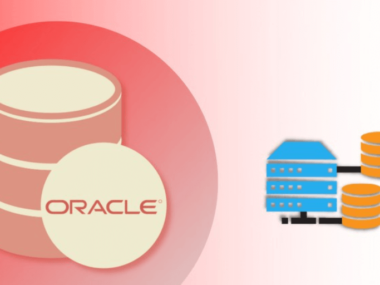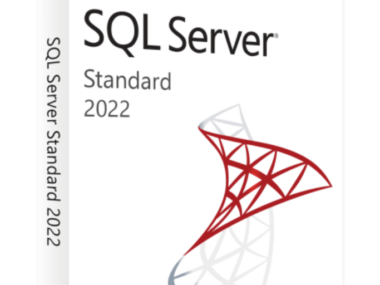Amazon RDS is a scalable database service. It enables users to manage relational databases in the cloud. It automates burdensome tasks like hardware provisioning, database setup, and backups.
Also Read
Amazon RDS offers a robust, scalable platform for running relational databases. It has minimal overhead. It stands out in the realm of cloud services.
It supports popular database engines such as MySQL, PostgreSQL, Oracle, and SQL Server. It also supports Amazon’s own Aurora. This versatility is helpful for developers and businesses.
This service streamlines database administration, enabling automatic software patching, monitoring, and performance tuning.
As such, Amazon RDS is a go-to choice for organizations. They want to optimize their database operations. They want to improve reliability and scale effortlessly without sacrificing performance.
It offers a cost-effective solution for database management with pay-as-you-go pricing. The solution can dynamically adjust to a company’s needs.
Introduction To Amazon Rds Database
We are embarking on a journey through the realm of cloud databases. Here, we unveil the Amazon Relational Database Service (RDS).
This cloud service stands out as a powerhouse for managing relational databases. Amazon RDS streamlines tasks such as setup, operation, and scaling of a database in the cloud.
Organizations can benefit from resizable capacity. It automates time-consuming database administration tasks, enabling laser-focus on applications and business.
Definition Of Amazon Rds
Amazon RDS is a distributed relational database service by Amazon Web Services (AWS). It is designed to simplify the setup, operation, and scaling of a relational database for use in applications.
RDS supports different types of database engines. These types include MySQL, PostgreSQL, Oracle, SQL Server, and Amazon Aurora. Amazon Aurora is a high-performance database built for the cloud.
Benefits Of Using Amazon Rds
Amazon RDS provides a suite of advantages that propel database management efficiency:
-
Automated Backups: Enjoy automatic backups of your database. They include daily snapshots and transaction logs.
-
You can easily scale resources up or down based on your application’s needs. It won’t cause any downtime.
-
High Availability – Utilize Multi-AZ deployments for enhanced database reliability and availability.
-
RDS features built-in encryption at rest and in-transit. It also integrates with AWS Identity and Access Management (IAM).
-
It’s cost-effective. Pay for only what you use. No upfront costs or long-term commitments.
-
Maintenance and Patches – Database software patching and maintenance are handled automatically. This keeps your database up-to-date with the latest fixes.
-
Performance Insights – Monitor your database’s performance with easy-to-understand metrics and insights.
Key Features Of Amazon Rds
Amazon Relational Database Service (RDS) makes it easier to set up, operate, and scale a relational database in the cloud.
It provides a cost-efficient and resizable capacity. It automates time-consuming administration tasks. These tasks include hardware provisioning, database setup, patching, and backups.
This service allows you to focus on your application. This way, you can give it the fast performance, high availability, security, and compatibility it needs.
Below, we’ll explore the key features of Amazon RDS. They set it apart and offer tremendous value to your database management strategy.
Automated Backups
We cannot overstate the importance of data integrity and recovery. Amazon RDS shines with its automated backup feature. This ensures that your database’s data is never lost. What happens behind the scenes is a continuous and seamless process:
-
Automatic backups are taken of your database.
-
Snapshots are stored securely in Amazon S3.
-
The ability to recover your database to any point in time within your backup retention period.
These backups are enabled by default, giving you peace of mind and eliminating the risk of catastrophic data loss.
Scalability And Flexibility
One of the most compelling features of Amazon RDS is its scalability and flexibility. Whether you’re experiencing a sudden traffic spike or planning for a steady growth in database usage, RDS has got you covered. How does it ensure this?
-
It allows easy scaling of compute resources. It also allows easy scaling of storage capacity associated with your database instance.
-
Offers a range of database instance types for different workloads.
-
Incorporates storage autoscaling, making sure you’re never out of space.
These options are designed to grow as your application’s needs evolve and change. They keep costs in check and performance at its peak.
Multi-az Deployments
High availability and disaster recovery are critical components for any application’s database tier. With Multi-AZ deployments, Amazon RDS stands out by offering:
-
Automatic failover to a standby instance in the case of a zone outage or instance failure.
-
Synchronous replication to a standby instance in a different Availability Zone (AZ).
-
Enhanced durability and availability of your RDS database.
This minimizes downtime and ensures that your application remains robust against infrastructure failures. It leads to seamless end-user experiences.
Amazon Rds Database Engines
Embarking on a cloud journey requires a robust database solution. Amazon Relational Database Service (RDS) offers just that.
This managed service simplifies the intricacies of database setup, operation, and scaling. Amazon RDS stands out for its versatile portfolio of database engines. The designs cater to diverse application demands. Let’s take a deep dive into the engines powering the Amazon RDS architecture.
MySQL
Mysql
MySQL leads the open-source database front. People widely recognize its renowned reliability, compatibility, and widespread adoption.
As an RDS engine, MySQL benefits from Amazon’s seamless scaling. It also gets automated backups and optimized performance for demanding applications.
MySQL on RDS is a cornerstone for developers. They use it to power dynamic startup websites and enterprise-grade applications. It offers an efficient SQL database.
PostgreSQL
Postgresql
PostgreSQL shines as a comprehensive object-relational database engine. It’s great for those desiring advanced features and open-source freedom.
Its compatibility with RDS unlocks powerful functionalities such as JSON support, extensive indexing, and advanced security features. Developers who favor sophisticated data workloads and custom extensibility rely on PostgreSQL within RDS.
Oracle is a mainstay in the realm of enterprise databases. It stands synonymous with scalability and robustness.
Amazon RDS uses Oracle’s powerful database engine. It offers a managed service. The service includes automated patching, encryption, and optimized performance for mission-critical applications.
Businesses that rely on Oracle databases can transition to Amazon RDS with confidence. They know their workloads are supported by a time-tested engine. It is adapted to the cloud environment.
Sql Server
Enterprise applications need a database that integrates seamlessly with Microsoft’s ecosystem. SQL Server on Amazon RDS answers that call.
It offers the reliability and efficiency of SQL Server. It also comes with the added perks of RDS’s managed service.
This collaboration results in high-performance data processing capabilities, optimal manageability, and strong security. This makes SQL Server an attractive choice for organizations embedded in Microsoft technologies.
Best Practices For Amazon Rds
Amazon Relational Database Service (Amazon RDS) makes it easy to set up, operate, and scale databases in the cloud. It gives you resizable capacity and automates time-consuming administration tasks.
These include hardware provisioning, database setup, patching, and backups. To fully leverage the benefits of Amazon RDS, follow best practices. This ensures your databases are high-performing, secure, and efficiently maintained.
Below, we delve into these practices. We examine how to optimize your Amazon RDS performance. We also cover bolstering security measures and implementing effective monitoring and maintenance techniques.
Performance Optimization
To maintain an efficiently running Amazon RDS database, performance optimization is crucial. Consider implementing the following strategies:
- Choose the right instance type: Match your database’s size and performance requirements with the appropriate RDS instance.
- Implement proper indexing: Create indexes on columns that are frequently used in queries to reduce search times.
- Use Amazon RDS Performance Insights: This tool helps to monitor your database’s performance and identify bottlenecks.
- Optimize queries: Regularly analyze and rewrite inefficient queries to minimize their execution time.
- Configure the database parameters: Adjust the RDS parameter group settings to fine-tune the database performance.
Security Measures
Security is paramount when managing databases. Safeguard your Amazon RDS instances by adopting the following security measures:
- Use IAM roles and policies: Assign granular permissions to control access to RDS resources appropriately.
- Enable encryption: Protect data at rest by enabling encryption using AWS Key Management Service (KMS).
- Implement SSL/TLS: Guarantee that data in transit between your RDS instance and your application is encrypted.
- Apply security groups: Use RDS security groups to control what IP addresses or EC2 instances can connect to your RDS instances.
- Regularly update patches: Ensure that your RDS instances remain up-to-date with the latest security patches provided by AWS.
Monitoring And Maintenance Techniques
Consistent monitoring and maintenance are essential to the health of your Amazon RDS deployment. Implement the following practices:
- Set up CloudWatch alarms: Monitor RDS metrics and receive notifications for any unusual activity or performance degradation.
- Regular backups: Take advantage of RDS’s automated backup feature, and consider creating manual snapshots for additional redundancy.
- Monitor query performance: Use the RDS Performance Insights and Enhanced Monitoring to keep an eye on the execution and performance of queries.
- Conduct regular maintenance: Schedule maintenance windows for updates and modifications that can’t be applied immediately.
- Plan for disaster recovery: Implement a Multi-AZ deployment or create read replicas in different geographical locations for high availability.
Asked Questions About What Is The Amazon Rds Database?
What Is The Rds Database?
RDS, or Amazon Relational Database Service, is a cloud-based, scalable database service by Amazon Web Services (AWS). It manages relational databases. It simplifies setup, operation, and scaling.
What Is The Use Of Amazon Rds?
Amazon RDS is a managed service that streamlines database administration tasks. It facilitates the setup, operation, and scaling of relational databases in the cloud. It handles hardware provisioning, database setup, patching, and backups.
Is Amazon Rds Sql Db?
Yes, Amazon RDS supports SQL. It is compatible with several SQL database engines. These include MySQL, PostgreSQL, Oracle, SQL Server, and MariaDB.
Is Amazon Rds Postgres?
Amazon RDS supports PostgreSQL. It provides managed services for setting up, operating, and scaling PostgreSQL in the cloud.
Conclusion of What is the Amazon RDS Database
Understanding Amazon RDS is crucial for streamlined database management. It simplifies setup, operations, and scaling, offering efficiency and reliability. Embrace RDS for its robust performance and focus on innovation rather than maintenance.
Explore this dynamic AWS service and propel your database capabilities to new heights.














1 comment